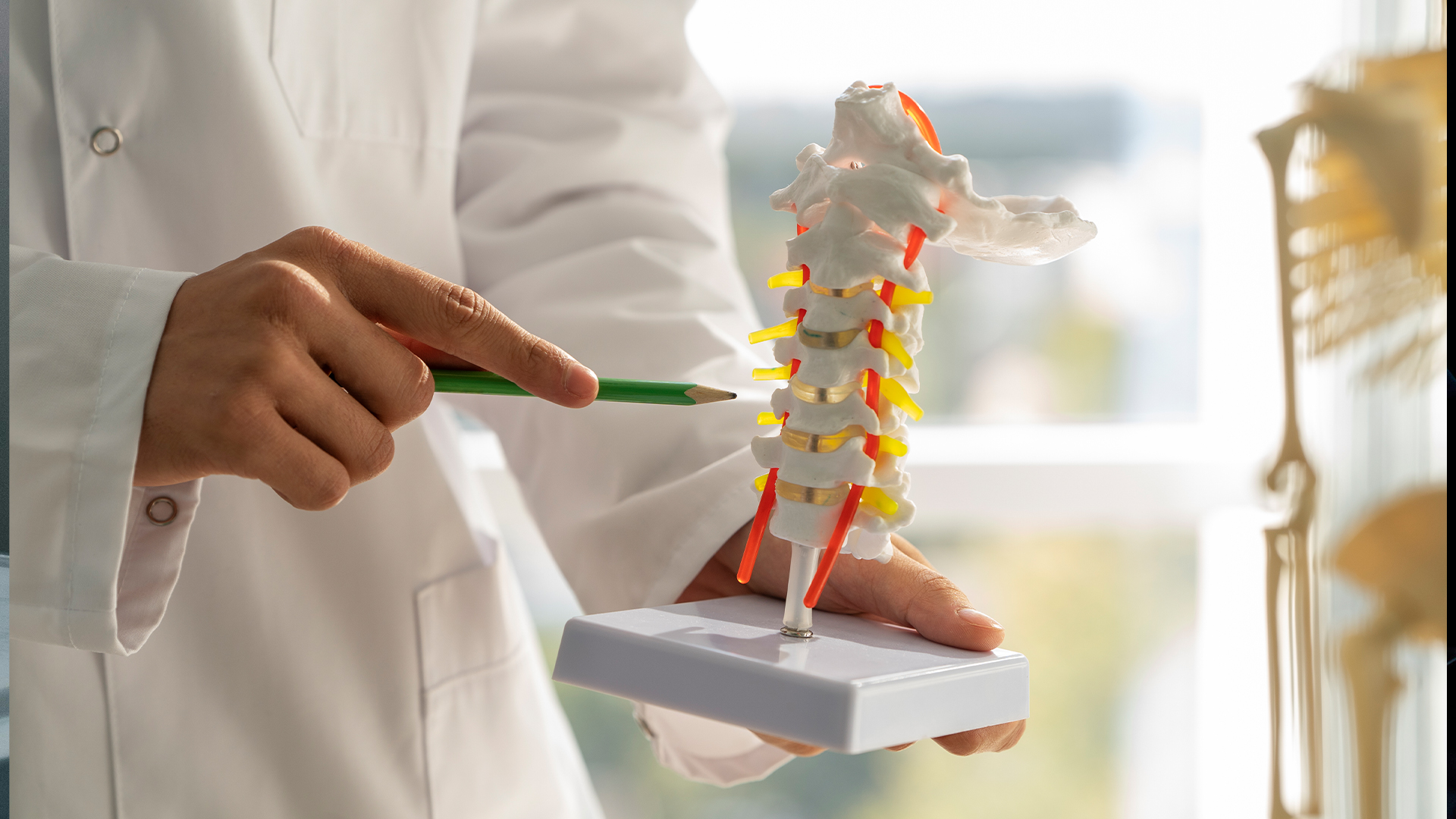Clinical Importance of Biokinetics through the Means of Physical Therapy
A spinal fusion is performed to stabilize the spine, often due to instability, degenerative disc disease, spondylolisthesis, or deformity. Fusion surgery limits motion at one or more spinal segments by promoting bone growth between vertebrae. Physical therapy plays a crucial role in:
1. Protecting the Surgical Site and Promoting Healing:
- Avoiding premature or excessive loading ensures proper fusion and graft integration.
- PT teaches safe movement patterns to protect the fused segments.
2. Restoring Mobility and Compensatory Control:
- Although fused segments are immobilised, surrounding joints (hips, thoracic spine) must remain mobile and functional.
- Rehab enhances compensatory motor control to reduce adjacent segment stress.
3. Building Long-Term Core Stability and Functional Strength:
- PT restores postural support, core endurance, and teaches proper movement to reduce long-term mechanical strain and disability.
The Importance of Physical Therapy
Spinal fusion rehabilitation is slower and more conservative than discectomy rehabilitation. It is staged based on healing timelines and surgeon clearance, with a focus on protection, control, and safe progression. Below are clinically relevant rehabilitation phases:
Phase 1: Protection & Early Mobility
Focus: Minimise pain, protect fusion site, initiate safe mobility.
Phase 2: Activation & Core Stabilisation
Focus: Improve spinal support through core control, build foundational strength.
Phase 3: Dynamic Strength & Movement Re-education
Focus: Develop functional strength, correct movement patterns, and enhance endurance.
Phase 4: Return to Activity & Maintenance
Focus: Resume higher-level activity, prevent adjacent segment overload, maintain lifelong spine health.
Safe Range of Motion (ROM)
Lumbar fusion
Avoid flexion/rotation for 8–12 weeks; focus on hip mobility and thoracic movement
Cervical fusion
Limit rotation/flexion-extension for 6–12 weeks; use controlled neck movements under supervision
Clinical Considerations
- Fusion takes 3–6 months to solidify; protect the area during this time.
- Adjacent segment disease risk increases if movement control is poor, teach lifelong motor strategies.
- Pain flares or sharp neurological symptoms must be assessed; not all pain is muscular.
- Encourage patients to use long-handled tools, avoid slumping, and use assistive devices when appropriate during early recovery.
Summary
Physical therapy after spinal fusion is essential to:
- Support the healing of the fused segments.
- Restore functional independence.
- Build safe, long-term movement strategies.
The focus is on protection first, then core stability, functional strength, and postural retraining, all progressed conservatively under professional guidance.




